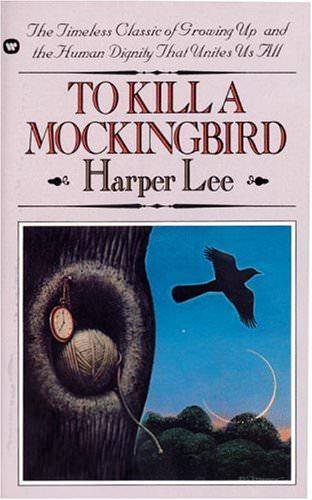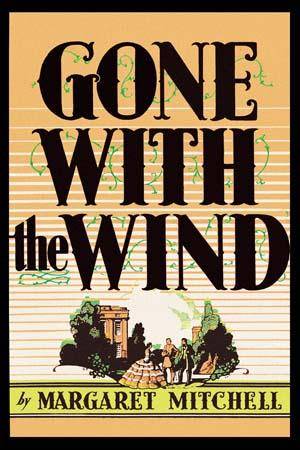“When he was nearly thirteen, my brother Jem got his arm badly broken at the elbow.” And so begins Harper Lee’s seminal 1960 novel, To Kill a Mockingbird, where we’re introduced to young Jean Louise “Scout” Finch, her brother and protector, Jem, and their father, the wise attorney and champion for justice Atticus Finch. Equal parts coming-of-age tale, Southern Gothic, and social commentary, Mockingbird—this is the pre-Katniss Everdeen version featuring the bird—is one of the most beloved novels of the 20th century. In 2006, in a poll conducted in Britain, librarians ranked it as the book every adult should read (it came in ahead of the Bible). The themes—racial inequality, rape, loss of innocence—are as resonant today as they were over five decades ago when Lee, published her debut. And for as long as the book has resonated with audiences, the same question arises: would she ever write another novel? Though Lee is still very much alive and celebrated her 88th on April 28, it seems doubtful that there will be a follow up to the adventures of Scout and Jem. In honor of Lee’s birth, BookTrib presents a primer on famous writers whose fame rests on a single novel. And what novels they are!
 Harper Lee: To Kill a Mockingbird (1960)
Harper Lee: To Kill a Mockingbird (1960)
Described by The New Yorker as “skilled, unpretentious and totally ingenuous…tough, melodramatic, acute, funny,” Mockingbird rocketed the 34-year-old Lee into the literary stratosphere. Winning the 1961 Pulitzer Prize for Fiction, the novel became an instant classic. If you’re only going to write one book, why not write one like this? And don’t worry what other people say. Just follow Atticus’s advice: “They’re certainly entitled to think that, and they’re entitled to full respect for their opinions…but before I can live with other folks I’ve got to live with myself. The one thing that doesn’t abide by majority rule is a person’s conscience.”
Emily Brontë, Wuthering Heights (1847)
Perhaps because the Brontë family was so prolific it seems as though Emily penned more than the moody classic of the moors, Wuthering Heights. But the novel, published under her pen name Ellis Bell and coming on the heels of sister Charlotte’s success with Jane Eyre earlier in 1847, was to be Emily’s sole—but impressive—legacy. The middle Brontë died of tuberculosis at age 30 in 1848.
 Ralph Ellison, Invisible Man (1952)
Ralph Ellison, Invisible Man (1952)
Though it was rumored that Ellison, who died in 1994 at age 80, was working on a second novel for the remainder of his life, nothing ever materialized. After winning the National Book Award in 1953 for Man, Ellison turned to nonfiction and published a collection of essays, Shadow and Act, in 1964. Despite the critical acclaim heaped on his impressive debut, it was no secret that Ellison was less than satisfied with his novel. He alludes to some measure of failure in his National Book Award acceptance speech, saying “Despite my personal failures there must be possible a fiction which, leaving sociology and case histories to the scientists, can arrive at the truth about the human condition, here and now, with all the bright magic of the fairy tale.”
Margaret Mitchell, Gone with the Wind (1936)
If ever a novel seemed larger than life, it’s Gone with the Wind. Spanning several years the in pre- and post-Civil War South, the trials and tribulations of Scarlett O’Hara and her numerous beaus, allies, and enemies is expansive enough to fill an entire series. But Mitchell—who tragically died at 48 in 1949 after being hit by a car on the way to the movie theater—is remembered for her single tome, as well as its successful film adaptation. As Clark Gable’s Rhett Butler might say, “frankly my dear, you should give a damn” and read this book.
 Sylvia Plath, The Bell Jar (1963)
Sylvia Plath, The Bell Jar (1963)
Like Emily Brontë who also passed away in the immediate wake of Wuthering Heights’s publication, Plath was dead a month after the first UK publication of her semi-autographical novel. In another parallel to Brontë, Plath also published Bell under a pseudonym, Victoria Lucas. Chronicling her descent into mental illness, the book was not published in the United States for nearly a decade, not hitting shelves until 1971, on the request of Plath’s mother and husband, poet Ted Hughes.
Which one of these have you read and which will you add to your to-read shelf?
Image Credits:
Featured Image: http://helios.lockedsandbox.com/products-page-2-2/tkam/mary-badham-scout-and-harper-lee-swing-portrait/



